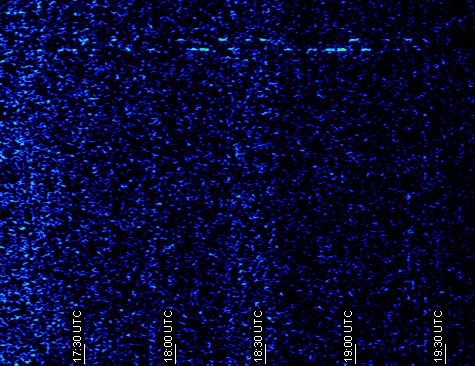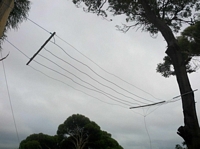Hello Edgar, VLF,
You are right!!
We should try to get some signal on our path on 17.47 kHz this
'season'. I am not even sure if March is the best time for that band.
On 137 kHz it was the only time we had a chance and, for reminding the
'old' times, this was our best result over the 16805 km path:

in April 2013. About 10 dB SNR in 11 mHz.
On VLF i think we will need longer time periods to transfer a
detectable signal. Apart from the path attenuation the question is, how
stable is the phase during that time. Using the common night time on
the path ('greyline') may be even worse because it is the time when the
terminator passes, and it may mess up the phase. So maybe daytime or
nighttime is even better? A few hours before and after the greyline
passes, because most the the path is in darkness then and the phase is
more stable then?
To check all this before we start to transmit, it would be helpful if
not essential to get a better impression about the propagation in that
frequency range on that path. This should be possible because JXN (16.4
kHz) and HWU (18.3 kHz) is quite close to my location and just in the
frequency range of interest.
What i would suggest is setting up a grabber page, monitoring the range
16...19 kHz at a scroll rate of 20 seconds per pixel, just like in the
tests on LF 5 years ago. The FFT bin width may be 1 Hz or so. It does
not need to be a RDF spectrogram, although it would be interesting to
see the phase. Following the amplitude is the first thing we need to
learn. Upload rates of 1/hour would be fine as long as no transmissions
take place.
It may take a few weeks until we know the behaviour of the changing
propagation and when the SNR is optimal. The we will find the best time
to start with the attempts.
In that frequency range you should have less local QRM (mains hum etc)
so it should work quite well.
What do you think?
73, Stefan
Am 24.01.2018 22:18, schrieb Edgar:
Hi Stefan,
A small T Top antenna, 5 m long, 800 mm wide top (PVC tubes), ~ 3 m to
~ 3.5 m above the ground.

There are 8 x 2 m radials on top of the ground, tied together at a 700
mm long ground stake.
It is located next to the antenna which received your 136 kHz
signal.(see the guy rope on the left?)
Lets look at ~ 17 kHz next Equinox, which is not far away.
Regards, Edgar
Moonah, Tasmania.
|
|

